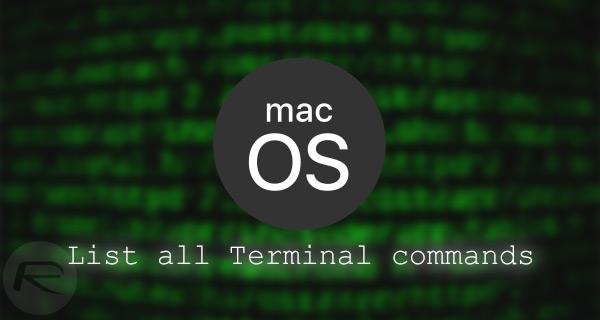

- HOW TO FORCE EMPTY TRASH ON MAC OS SIERRA USING TERMINAL HOW TO
- HOW TO FORCE EMPTY TRASH ON MAC OS SIERRA USING TERMINAL ARCHIVE
- HOW TO FORCE EMPTY TRASH ON MAC OS SIERRA USING TERMINAL SERIES
- HOW TO FORCE EMPTY TRASH ON MAC OS SIERRA USING TERMINAL DOWNLOAD
So, let’s take a closer look at how you can empty all the trash bins securely with CleanMyMac X. Even if you forget about theses bins, CleanMyMac does not. The same goes for Mail, Aperture, external drives and more. You won’t see it in your desktop trash can. When you delete an image from Apple’s Photos app, it’s actually moved to the Photos trash. Multiple trash bins? Yes! For example, Photos has its very own trash. Not only does it empty your desktop trash, but it also cleans up all the other trash bins on your Mac, including those most often overlooked. Empty trash securely with CleanMyMac Xįortunately, you can empty trash securely in a click with CleanMyMac X app by MacPaw. Check your folder to see the file gone.Ģ.
HOW TO FORCE EMPTY TRASH ON MAC OS SIERRA USING TERMINAL ARCHIVE
The file or archive should now be completely and securely erased. Paste in the following command into the Terminal window:īut replace Archive.zip with the name of YOUR file and its extension - it's the file inside the folder you want to erase.Ĭlick Enter and wait for magic to happen.


Now we need to tell Terminal which files to securely erase from the folder we've just specified. Now, right-click this folder to reveal Services.Put the files you want to delete into a new folder.In our case, the Terminal will secure erase the entire folder content. This command allows to apply Terminal commands to a particular folder. Make sure "New Terminal at Folder" is ticked.Click on Apple menu > System Preferences > Keyboard.Otherwise, here we go.įirst, you should enable Terminal as a service in the right-click menu. If you start to sweat a bit just reading this, move on. It’s crucial to understand the commands and type them without errors.

You can make a mess of things with Apple’s Terminal. Force empty trash using Terminalīefore we begin, a note. The old way of "secure erase" doesn't work for solid state drives. But if you need to make sure the files are 100% gone, still there are ways to do it. Today, the industry standard is SDD and all MacBooks are shipped with those. Secure erase is different for SSD and HDD drivesīefore 2012, all MacBooks had HDDs (magnetic drives). This feature was an option in OS X until the release of El Capitan, when Apple removed it.
HOW TO FORCE EMPTY TRASH ON MAC OS SIERRA USING TERMINAL SERIES
When you empty trash securely, the system writes a series of ones and zeroes over the file you’ve deleted, making it impossible to recover. This is where the secure empty trash feature comes in. This means if someone wanted to recover deleted files with special software, they have a chance to succeed, although it’s a tedious process. The space they occupied is marked by the system as available for overwriting, but the files themselves remain on your drive until they’re overwritten by something else. When you empty trash in macOS, the files inside aren’t actually erased. The difference between Empty Trash and Secure Empty Trash
HOW TO FORCE EMPTY TRASH ON MAC OS SIERRA USING TERMINAL HOW TO
In this post, we’ll talk about the difference between “empty trash”, “empty trash securely”, and how to make sure your deleted files are well and truly gone.Īnd if you'd like your files to completely annihilate, try a Shredder tool in CleanMyMac X. To delete those items, you simply empty the trash. Technically, items in your trash are still on your Mac, as you can drag them right back out. That little silver trash can on your Mac’s desktop represents an invisible Mac trash folder. But to help you do it all by yourself, we’ve gathered our best ideas and solutions below.įeatures described in this article refer to the MacPaw site version of CleanMyMac X.
HOW TO FORCE EMPTY TRASH ON MAC OS SIERRA USING TERMINAL DOWNLOAD
So here's a tip for you: Download CleanMyMac to quickly solve some of the issues mentioned in this article.


 0 kommentar(er)
0 kommentar(er)
